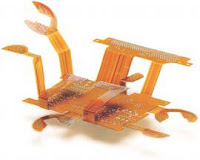Society of Manufacturing Engineers member and author, Mark Hamel, has been awarded The Shingo Prize Research & Professional Publications Award for the Kaizen Event Fieldbook. Given out in May 2010 in Utah at The Shingo Prize Annual Conference, the Shingo Research Award recognizes and promotes research and writing regarding new knowledge and understanding of lean and operational excellence.
SMT recently received a copy of Mark R. Hamel’s Kaizen Event Fieldbook for review. Hamel is a consultant to the manufacturing industry, facilitating the transition to Lean. Lean manufacturing has been a noteworthy electronics assembly strategy for many years, raised to a necessity level by the profit-margin, supply chain, and quality strains of the recession that began in 2008. While manufacturers must work to be lean, they also must make lean principles work for them. “Learn by doing” is the mantra of Hamel, encouraging readers to apply the lean principles that best improve their business. Hamel explains kaizen as “small, cumulative continuous improvements.” While some may be tempted to engage Lean as an abrupt overhaul of their business, these incremental changes will likely result in a more successful and sustainable manufacturing environment. Read a brief description of the book from its publishers here.
The workbook is divided into three sections, an education on the foundations of lean: kaizen, leadership, definitions, and ways to get started; four phases for developing, deploying, and maintaining kaizen events and strategy; and a final section on customizing these principles and actions for the specific business. Perhaps the most valuable resource of the Kaizen Event Fieldbook is appendix of worksheets: forms that can be used for audits, event planning, tracking initiatives, and more. The book is also closely synched with its Website, http://www.kaizenfieldbook.com/, where readers are welcome to ask the author questions, download the blank forms for their employees, and link to related resources suggested by Hamel.
For most electronics manufacturers, aspects of the Lean system are familiar, while others are not. The Fieldbook includes many clear definitions for the terms employed in the lean concept, while Hamel continuously points out that readers should come to the system with an idea of their own goals and interests. There is a difference between memorizing the system and terminology and learning it. Hamel encourages readers to learn the system and adapt it for their individual needs.
To quote Hamel, “the Fieldbook can be applied in several ways: at a corporate level as a framework for developing (improving, if the developing is done) and deploying standard work throughout the organization, and for the personal development of motivated kaizen practitioners. Kaizen’s role within a lean business structure is defined, and the point is frequently made that kaizen is a daily and weekly application of lean, not a single-event makeover. Detailed descriptions of how a kaizen event is planning, how it functions, and how best to maintain its effect are provided.
Contrary to the hype, lean systems can create plenty of waste, when communication lags, implementation is too ambitious, or when follow-up is lacking. Hamel points out that, while the main thrust of the kaizen event is kick-off, training, storyline, leaders’ progress meeting, work strategy, reporting, and recognition, this event is worthless without planning and follow-up. The Fieldbook’s suggestions for communicating include reporting methods as well as input methods to gain fresh ideas from employees. Suggestions even include visual communication, such as different colored shirts for people involved in different parts of a project.
Lean manufacturing demands continuous investment in making the production flow work; eliminating waste; and increasing your business’s performance through higher throughput, fewer errors, faster turn-around, or other metrics. With the Society of Manufacturing Engineers’ seal on this workbook, it looks to be a valuable addition to, or starting point for, a Lean initiative at the manufacturing facility.
For more information, read SME Releases the Kaizen Event Fieldbook
Meredith Courtemanche, managing editor































 Worldwide sales of semiconductors were $14.7 billion in March, a gain of 3.3% from the prior month when sales were $14.2 billion, the SIA reported. ECA’s numbers confirm that component orders bounced back slightly in March from lows in the first two months of the year. “The modest sequential rebound in worldwide sales in March suggests that demand has stabilized somewhat, albeit at substantially lower levels than last year,” said SIA President George Scalise. For SIA's geographic breakdown of orders, see the above charts. So demand was lower than the prior year, but without the stocking hangover experienced in the last recessionary period.
Worldwide sales of semiconductors were $14.7 billion in March, a gain of 3.3% from the prior month when sales were $14.2 billion, the SIA reported. ECA’s numbers confirm that component orders bounced back slightly in March from lows in the first two months of the year. “The modest sequential rebound in worldwide sales in March suggests that demand has stabilized somewhat, albeit at substantially lower levels than last year,” said SIA President George Scalise. For SIA's geographic breakdown of orders, see the above charts. So demand was lower than the prior year, but without the stocking hangover experienced in the last recessionary period.
